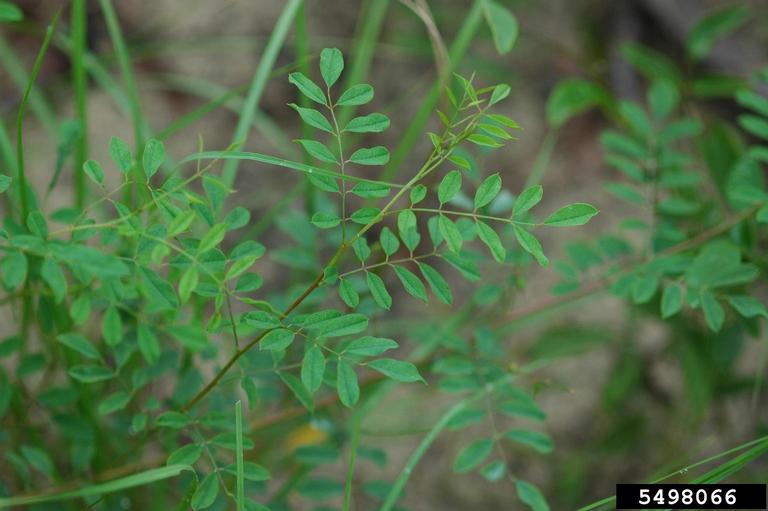Indigofera caroliniana
| Indigofera caroliniana | |
|---|---|

| |
| Karan A. Rawlins, University of Georgia, Bugwood.org | |
| Scientific classification | |
| Kingdom: | Plantae |
| Division: | Magnoliophyta - Flowering plants |
| Class: | Magnoliopsida – Dicotyledons |
| Order: | Fabales |
| Family: | Fabaceae ⁄ Leguminosae |
| Genus: | Indigofera |
| Species: | I. caroliniana |
| Binomial name | |
| Indigofera caroliniana Mill. | |

| |
| Natural range of Indigofera caroliniana from USDA NRCS Plants Database. | |
Common name: Carolina indigo
Contents
Taxonomic notes
Description
Where this species is found, it is frequent (FSU Herbarium).
Distribution
Ecology
Habitat
It is found along the edges of flatwoods, mixed woodlands, upland ridges, deciduous forests, slash pine-hardwood stands, sand pine scrub, and sand ridges (FSU Herbarium). This species grows in sand and sandy loam in open areas (FSU Herbarium). This species also occurs outside of its natural environments in human disturbed areas such as open fields, bulldozed scrub oak sand hills, clobbered slash pine and hardwood fields, and wood pastures (FSU Herbarium).
Phenology
This species has been observed flowering June through July and fruiting June through September (FSU Herbarium).
Seed dispersal
Seed bank and germination
Fire ecology
This species occurs in areas that is burned (FSU Herbarium)
Pollination
The following Hymenoptera families and species were observed visiting flowers of Indigofera caroliniana at Archbold Biological Station (Deyrup 2015):
Halictidae: Lasioglossum placidensis
Megachilidae: Anthidiellum perplexus
Use by animals
Deyrup observed these bees, Anthidiellum notatuin rufimaculatum, A. perplexum,Megachile albitarsis on I. caroliniana.[1]
Diseases and parasites
Conservation and Management
Cultivation and restoration
Photo Gallery
References and notes
Deyrup, M.A. and N.D. 2015. Database of observations of Hymenoptera visitations to flowers of plants on Archbold Biological Station, Florida, USA.
Florida State University Robert K. Godfrey Herbarium database. URL: http://herbarium.bio.fsu.edu. Last accessed: June 2014. Collectors: Ed Keppner, Lisa Keppner, Loran C. Anderson, James R. Burkhalter, R.K. Godfrey, R. C. Phillips, C. Jackson, R L Lazor, Sidney McDaniel, Richard S. Mitchell, R. Kral, D. B. Ward, J. Beckner, O. Lakela, L. J. Brass, Roland McKee, Rodie White, Andre F. Clewell, R. Komarek, Richard R. Clinebell II, Cecil R Slaughter, B. E. Smith, R. L. Wilbur, William B. Fox, L. A. Whitford, James W. Hardin, Wilbur H Duncan, Ted Bradley, John Stevenson, H. R. Reed, John B. Nelson, A. Goodyear, R. Wetmore, Brian R. Keener, and Wayne K. Webb. States and Counties: Florida: Bay, Collier, Dixie, Duval, Escambia, Flagler, Franklin, Hernando, Highlands, Jackson, Leon, Levy, Liberty, Madison, Okaloosa, Taylor, Wakulla, and Walton. Georgia: Grady, McIntosh, Thomas, and Tift. South Carolina: Darlington. North Carolina: Bladen, Brunswick, Richland, and Sampson. Alabama: Henry, Mobile, and Wilcox.
- ↑ Deyrup, M. J. E., and Beth Norden (2002). "The diversity and floral hosts of bees at the Archbold Biological Station, Florida (Hymenoptera: Apoidea)." Insecta mundi 16(1-3).